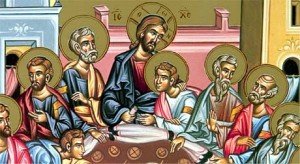I suspect that many of my readers are wondering when I will ever finish with the topic of Anamnesis. It seems that I have been writing about this for weeks. I have purposely spent a lot of time on this idea since I believe it can make a great deal of difference to our worship if we truly understand this idea. And I would admit that it isn’t an easy idea to understand. How can it be that what we do together actually makes present what Jesus Christ did with His disciples thousands of years ago? How can it be that somehow Christ is truly present with us under the appearance of bread and wine? Many humans find it too hard to believe these things! They are ideas that can only be accepted by and with faith.
So why is it that some of us are able to accept the truth of these matters and others aren’t? The answer is that we are able to do so only because of the gift of faith that God has given us. Why has He given us this gift? We have been given this faith because He knows that it is important for us in order to achieve the goal of life, namely growing in His likeness.
I would ask your tolerance if still presenting more information about this very important idea.
In a fundamental sense worship is a corporate activity; it is social in structure within which people are embedded into a particular kind of society. The opening words of the liturgy gather those present in the name of God: Father, Son and Holy Spirit. There is a corporate confession; the Gospel is proclaimed; the creed is recited; the congregation is led in an act of incorporating intercessions; the community shares in the Eucharist and is sent out in love and peace. Participation forms a corporate identity grounded in the remembrance of a particular story. To engage with the concept of anamnesis is to understand more fully the nature of the relationship between the Church’s worship and its life and witness as the body of Christ in and for the world. It is the Eucharist that lies at the heart of the Church’s mission.
The Church is a community that gathers for anamnesis, and is in a profound sense formed and shaped by it. The sacraments form a focal point for this ongoing process: initiating new members into the Church and sustaining, challenging and nourishing them within it. (More to follow)

